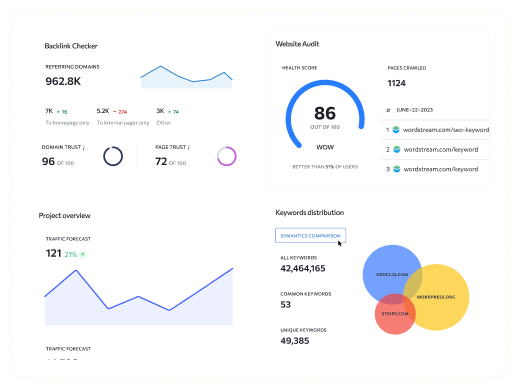In the dynamic realm of B2B (business-to-business) marketing, lead nurturing is a critical strategy to cultivate relationships with potential customers and guide them through the buying journey. From initial contact to conversion, effective lead nurturing can significantly impact sales outcomes and foster long-term customer loyalty. Here, we explore best practices for B2B lead nurturing, along with a customizable template to streamline your efforts.
1. Understand Your Audience:
Before embarking on any lead nurturing campaign, it’s essential to have a deep understanding of your target audience. Conduct thorough market research to identify their pain points, challenges, and preferences. Tailor your messaging and content to resonate with their needs and interests.
2. Personalize Communication:
In today’s saturated digital landscape, generic, one-size-fits-all messages often fall flat. Personalization is key to capturing the attention of busy B2B buyers. Utilize customer data and segmentation techniques to deliver relevant content at each stage of the buyer’s journey. Address prospects by name, reference their specific industry or role, and provide solutions tailored to their unique challenges.
3. Implement Multi-Channel Engagement:
Diversify your communication channels to reach prospects where they are most active. Utilize a combination of email marketing, social media, content marketing, and targeted advertising to engage with leads across various touchpoints. By maintaining a consistent presence across multiple channels, you can reinforce your messaging and increase the likelihood of conversion.
4. Provide Value with Targeted Content:
Deliver valuable, educational content that addresses the needs and pain points of your target audience. Whether it’s blog posts, whitepapers, case studies, or webinars, focus on providing actionable insights and solutions that demonstrate your expertise and build trust. Use marketing automation tools to deliver content based on lead behaviour and preferences, ensuring relevance and timeliness.
5. Lead Scoring and Segmentation:
Implement lead scoring mechanisms to prioritize leads based on their engagement level and readiness to buy. Segment leads into distinct categories based on demographic, firmographic, and behavioural criteria. Tailor your nurturing strategies and content to align with each segment’s specific needs and buying stage, maximizing conversion opportunities.
6. Nurture with a Purpose:
Every interaction with a lead should have a clear objective and contribute to advancing them through the sales funnel. Define specific goals and desired outcomes for each stage of the nurturing process, whether it’s scheduling a demo, downloading a resource, or requesting a consultation. Continuously track and analyze performance metrics to refine your approach and optimize results.
7. Establish Trust and Credibility:
Building trust is essential in B2B relationships, where purchasing decisions often involve significant investment and risk. Position your brand as a trusted advisor by consistently delivering valuable insights, demonstrating industry expertise, and showcasing customer success stories. Leverage social proof, such as testimonials and reviews, to reinforce credibility and alleviate concerns.
8. Align Sales and Marketing Teams:
Effective lead nurturing requires seamless collaboration between sales and marketing teams. Establish clear communication channels and shared goals to ensure alignment throughout the lead lifecycle. Implement lead handoff processes and workflows to facilitate smooth transitions between marketing-generated leads and sales-qualified opportunities.
9. Monitor and Optimize Performance:
Regularly monitor the performance of your lead nurturing campaigns and make data-driven adjustments to optimize results. Track key metrics such as open rates, click-through rates, conversion rates, and ROI to gauge effectiveness. A/B test different messaging, content formats, and delivery timings to identify what resonates best with your audience.
10. Continuous Learning and Adaptation:
The B2B landscape is constantly evolving, and successful lead nurturing requires a commitment to continuous learning and adaptation. Stay informed about industry trends, competitor strategies, and emerging technologies to stay ahead of the curve. Solicit feedback from both prospects and internal stakeholders to identify areas for improvement and innovation.
FAQ
Q1. What is lead nurturing, and why is it important in B2B marketing?
Lead nurturing is the process of building relationships with potential customers at every stage of the buyer’s journey, from initial awareness to purchase decisions. It’s crucial in B2B marketing because it helps to educate prospects, build trust, and guide them towards conversion, ultimately driving revenue growth.
Q2. How can I personalize lead nurturing campaigns for my target audience?
Personalization involves leveraging customer data to tailor your messaging and content to the specific needs and preferences of individual leads. Segment your audience based on demographics, firmographics, and behaviour, and use automation tools to deliver relevant content at the right time through preferred channels.
Q3. What types of content are most effective for B2B lead nurturing?
Effective B2B lead nurturing content provides valuable insights and solutions that address the challenges and pain points of your target audience. This can include blog posts, whitepapers, case studies, webinars, and interactive tools. Focus on delivering educational content that demonstrates your expertise and builds trust with prospects.
Q4. How can I measure the success of my lead nurturing efforts?
Key metrics for measuring lead nurturing success include open rates, click-through rates, conversion rates, and ROI (return on investment). Track these metrics regularly and analyze performance data to identify areas for improvement. A/B testing different approaches can also help determine what resonates best with your audience.
Q5. How do I ensure alignment between sales and marketing teams in lead nurturing?
Establish clear communication channels and shared goals between sales and marketing teams to ensure alignment throughout the lead lifecycle. Implement lead handoff processes and workflows to facilitate smooth transitions between marketing-generated leads and sales-qualified opportunities. Regular collaboration and feedback are essential for success.





